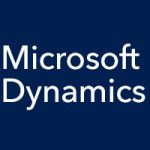An article published last month by MSDynamicsWorld.com made some great points on why you’re better off if your CRM (Customer Relationship Management) and ERP (Enterprise Resource Planning) solutions are smoothly integrated. And if you’re already using Microsoft Dynamics SL, the project-focused ERP solution for project-driven organizations, what could make for a smoother CRM integration than Microsoft Dynamics CRM?
It used to be that CRM was considered a “front office” solution and ERP “back office.” CRM was only used by sales and marketing staff, and ERP only by accountants and managers. But it’s time to take a look at the advantages of integrating the two solutions.
First of all, CRM and ERP integration will reduce the amount of time spent manually entering data into one system or the other. Why have a member of your sales team create a CRM sales order, only to have the same order entered by someone else into your ERP system? If one automatically creates the other, you not only save your staff time, but you also decrease the potential for errors in data entry.
Or what if your sales team needs to know the exact position of stock while they are in the field? With no integration, they would have to rely on data from their CRM that may not be updated, because they would have no visibility into the ERP that links the stock back into the system.
Microsoft Dynamics SL and Microsoft Dynamics CRM both look and work like other Microsoft products you are already familiar with, and needless to say, they integrate and play well with one another. You can use Connector to integrate SL and CRM yourself if you have staff with the expertise to do so, and if not, MIG would be happy to help you out with your integration.







